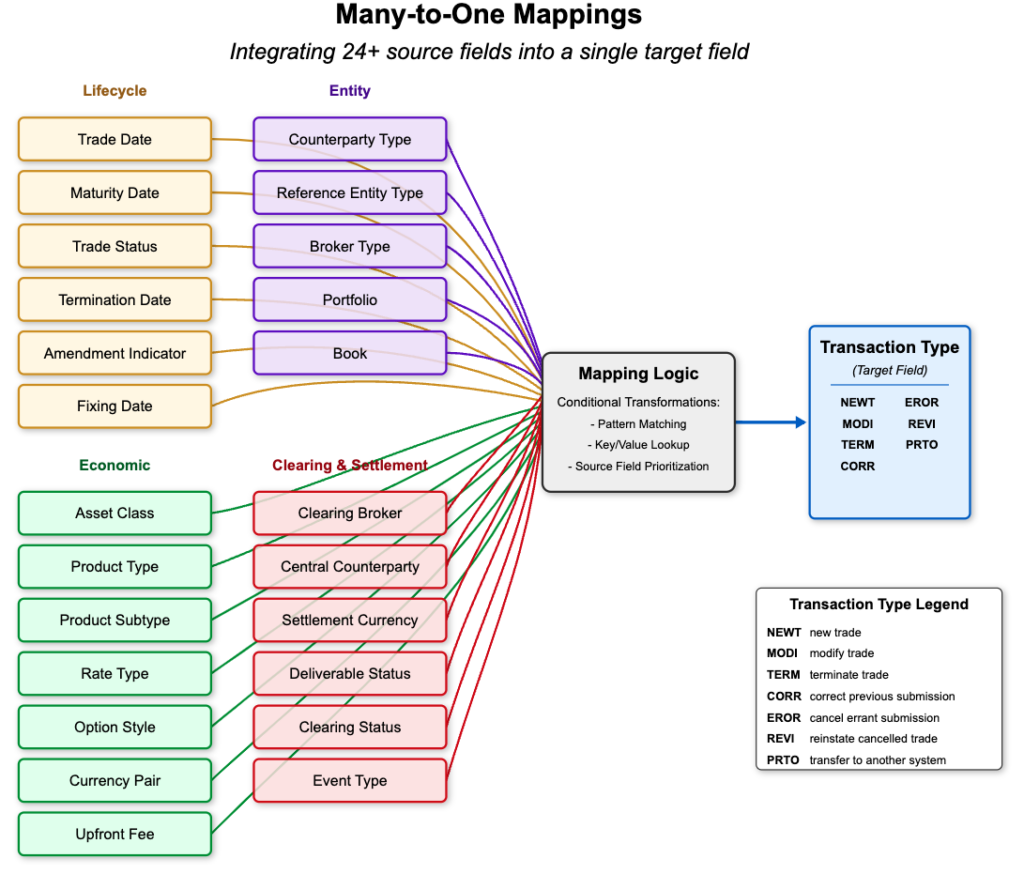By Aaron Hallmark • March 4, 2025
The API is dead.
For too long, vendors and systems integration consultants have been touting APIs as the miracle cure for enterprise systems integration. Connect any system to any other system! Seamless data flow! Push-button automation!
“It’s time to stop pretending that connectivity alone solves enterprise integration.”
But firms are beginning to see through the hype, as integration costs and timelines continue to balloon despite supposedly “seamless” API solutions. A recent Oracle study reveals the harsh reality: more than 80% of projects run over time and/or over budget, with cost overruns averaging 30% and schedule slips averaging 41%.
Why? Because we’ve been sold a solution to the wrong problem.
Let’s be clear: APIs aren’t useless. They’re essential infrastructure—like power lines or phone networks. But it’s time to stop pretending that connectivity alone solves enterprise integration.
This is the first in a three-part series exploring why traditional integration approaches are failing enterprises, and how AI-Driven Integration (ADI) delivered via Data Mapping as a Service (dMaaS) is emerging as the future of enterprise integration.
The Great API Deception: From Revolution to Marketing
When the concept of the API (Application Programming Interface) first emerged in the 1940s as a catalog of subroutines for the punched tape EDSAC computer, it represented pure programming innovation. The term “application program interface” later appeared in a 1968 AFIPS conference paper, where it described a set of calls designed to free the programmer from dealing with the idiosyncracies of the system’s lower-level components. APIs were programming tools designed to enable efficient software-to-software interactions, abstracting away complexity for developers.

APIs evolved dramatically over the decades. The 1970s brought language-specific APIs in C and later C++. The 1980s saw the rise of operating system APIs like Microsoft’s Windows API. Then came the web revolution. In 2000, Roy Fielding’s landmark dissertation introduced REST (Representation State Transfer) APIs, finally allowing web applications to communicate seamlessly across languages and platforms. By 2002, pioneers like Salesforce, eBay and Amazon had launched the first modern web APIs, sparking an integration revolution.
“By 2023, what began as a technical programming interface had become ‘a marketer’s dream.'”
By the 2010s, API-first platforms exploded, leading to the modern API economy. Companies like Twilio (2008), Stripe (2010), and Plaid (2013) built entire businesses around APIs. Enterprises rapidly adopted API marketplaces, and software firms began positioning APIs as standalone products.
The API Gold Rush
Then the marketers got hold of the term.
By 2023, what began as a technical programming interface had become, in industry publications’ own words, “a marketer’s dream,” with technical writers and product managers jumping on the bandwagon. “API” became a buzzword, stripped of its technical meaning of standardized code interfaces, and repurposed as a catch-all wonder elixir.
Vendors began promising that APIs alone would solve enterprise integration challenges. In the words of one iPaaS (Integration Platform as a Service), APIs will “transform your processes, remove data silos, avoid mundane, repetitive tasks, improve the customer experience, keep employees engaged, and more!” Just throw this three-letter acronym at the problem, and watch everything magically work together!
Reality tells a different story.
The Phone Line Fallacy
To illustrate, an API is like a phone line connecting someone in Beijing speaking Mandarin to someone in Delhi speaking Hindi. The connection is crystal clear—but understanding? That’s another matter entirely.
Think of enterprise integration like a global conference call.

- You’ve got perfect phone lines (APIs)
- Crystal-clear reception (connectivity)
- But one person speaks Mandarin (SAP)
- Another speaks Arabic (Oracle)
- A third speaks Swahili (Salesforce)
- And each has their own technical dialect
- Plus some use formal language while others use slang
Adding more phone lines won’t help these people do business together. Instead, they need translation.
The Hidden Complexity of “Simple” Integration
I’ve seen this firsthand over two decades of leading professional services teams integrating financial systems in trading, risk, payments, and compliance, for some of the world’s largest global banks and asset managers. My CTO Corey can build an API in minutes—we do it constantly to connect our own front-end and back-end systems.
That’s the easy part.
The hard part? Getting systems to actually understand each other.
The Devil in the Data
For example, I remember one regulatory trade reporting project where we needed to map something as seemingly simple as “Transaction Type.” The target system used a single field with seven predefined standard values. But the source system had no concept of transaction type—it had to be derived from over two dozen fields using complex conditional logic. We spent weeks deciphering these mismatches, just for a single field!

In essence, today’s enterprise systems don’t just speak different languages—they speak different dialects. Vendors tout “off-the-shelf” adapters between systems, but the reality is messier. Clients run different versions of enterprise platforms, often customized beyond recognition. It’s like expecting someone who speaks Mandarin to automatically understand Cantonese because “they’re both Chinese.”
The base case numbers tell the story:
- A simple asset class like FX takes 1-2 weeks for initial mapping between a source and a target
- Moderate complexity assets (commodity, equity) require 2-3 weeks
- Complex assets (interest rate derivatives, credit derivatives) need 3-4 weeks
- Stakeholder review, edit, and sign-off? Add another 150-300% to those timelines
The Real Challenge: Mapping
In a word, APIs don’t map your data. They don’t:
- Analyze field names, meanings, and data types across systems
- Understand rules about required, optional, or conditional fields
- Define complex transformation logic between mismatched fields
- Capture business context and relationships
- Handle multiple source systems feeding one target
This is what we call mapping. And it’s where the real work begins.
When Simple Isn’t Simple
Let’s take a seemingly simple example: mapping “Client ID” between systems.
System A has:
- ClientID (numeric)
- ClientType (individual/corporate)
- CountryOfDomicile
- TaxStatus
System B just has:
- CustomerReference (alphanumeric)
- CustomerSegment
Mapping these requires understanding:
- How System A’s fields combine to create System B’s reference
- What business rules determine the segment
- How to handle special cases and exceptions
- What validation rules apply
- How to maintain this logic as business rules change
Now multiply this complexity across thousands of fields and dozens of systems. That’s enterprise integration.
Valid Doesn’t Mean Correct
As Oracle notes in their integration study, “Being able to load the data into the target system is not the measure of success because the data may be valid but not correct.” This is where mapping makes all the difference.
Today, armies of business analysts tackle this challenge manually. They must:
- Understand both source and target systems deeply
- Map fields between systems, often with complex many-to-one relationships
- Derive and document transformation logic
- Get stakeholder buy-in on their interpretations
- Hand off to developers who translate it all into code
And APIs? They just stand there, connecting systems that still can’t understand each other.
The Maintenance Trap
Moreover, even after you’ve solved the initial mapping challenge, the real costs are just beginning. Systems change. Regulations evolve. Business rules update. Each change ripples through your carefully crafted mappings.

And maintenance? Digibee’s 2023 State of Enterprise Integration report states that a staggering 98.5% of organizations had to rebuild at least one integration in the past year alone. According to Deloitte, CIOs spend 57% of their technology budgets just keeping existing systems running, 26% to fund incremental business change, with only 16% left for innovation.
I recall one client who needed to add just three new data fields for regulatory reporting. The integration vendor’s quote: $250,000 and six months of work. This for a system that was already “integrated” via APIs!
The End of an Era
“In a few years, APIs will be like power outlets—essential, but irrelevant to competitive advantage.”
Don’t get me wrong when I say the API is dead. APIs will always be part of integration—just like roads are part of transportation. But roads don’t get you to your destination. Navigation does.
In a few years, APIs will be like power outlets—essential, but irrelevant to competitive advantage.
The future is AI-Driven Integration (ADI), which combines the basic connectivity of APIs with intelligent mapping capabilities:
- Automated analysis of source and target fields
- AI-based field matching and relationship detection
- Intelligent transformation logic generation
- Continuous learning from human feedback
- Adaptive responses to system changes
With this in mind, we at FAIT are building solutions in this emerging space. Starting with AI-Driven Mapping (ADM), what used to take months now takes minutes. But that’s a story for another day. Stay tuned for Part 2, where we’ll explore another overused “solution” for enterprise integration—ETL—and why it falls just as short.
What integration challenges have you faced that APIs couldn’t solve? I’d love to hear your experiences in the comments.
Next in the series: ETL is Dead: Why Moving Data Isn’t Enough

